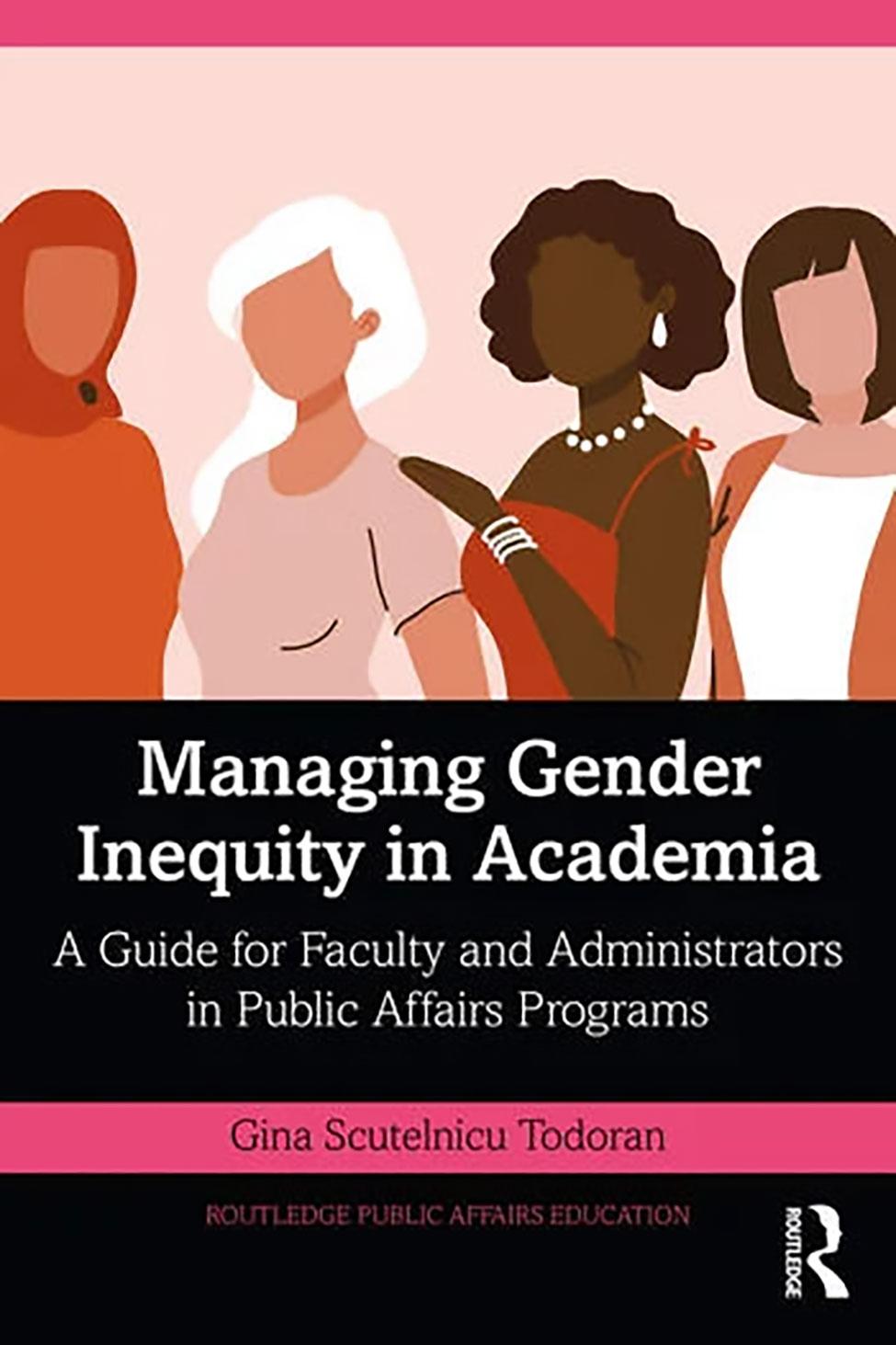

Managing Gender Inequity In Academia
Gina Scutelnicu-Todoran, PhD
Professor, Public Administration

What is the central theme of your book?
This book provides an evidenced-based guide to faculty members, higher education administrators, and graduate and doctoral students about the various career paths in academia, discusses the persistence of gender and racial inequities in higher education, and provides recommendations for overcoming such inequities. It is a guide for building gender equity in academic workplaces.
What inspired you to write this book?
The idea for this book was inspired by a research talk I gave during the COVID-19 pandemic at a university in the New York City metropolitan area. At that time, I was conducting research about academic women and their contributions to the public affairs field, and I already had some projects lined up for consideration as journal articles, but I never thought of writing a book. Thanks to a friendly suggestion of an academic woman who shall remain nameless, this book has become a reality.
In a way, this research monograph tells my career story through the views of hundreds of faculty members and other interview participants who were surveyed. In the public affairs discipline, we conduct a lot of research about workplaces and career advancement in public and nonprofit organizations, but we don't actively research such issues in our own workplaces in higher education, which are also public and nonprofit organizations.
I would like to add that this is the type of book I wish were available when I was a doctoral student and a junior faculty member. In April 2024, I gave a book talk at a conference of our national professional association, the American Society of Public Administration, and the outpouring of interest from the audience was inspiring and validated the book’s timeliness.
Why is this book important in your field? What does it contribute to the current body of knowledge on this topic?
My book contributes to the existing literature and practice in several ways. First, it examines gender inequity in the academy across different academic career tracks (tenure and non-tenure tracks) and through the lenses of gender, race, ethnicity, and the intersection of gender with race. Second, the book is an evidenced-based guide for all faculty and graduate or doctoral students because it describes and discusses specific tenure and/or promotion expectations. Third, the book expands the discussion about academic leadership by including a discussion about gender equity in academic leadership positions. Fourth, my book aims at educating our colleagues in higher education that faculty contributions vary based on the type of university they are working for (research-intensive to teaching-oriented), and one's research productivity is not always indicative of one's ability to be a successful academic. Finally, my book discusses the challenges of our non-tenure track colleagues which will negatively impact our academic freedom post-COVID.
Tell me about a particularly special moment in writing this book.
A special moment in writing my book was the qualitative data analysis of the interviews. I learned a lot from these discussions, and I came to realize that individual faculty members should have the choice of prioritizing where they want to contribute the most in their academic career advancement, whether it's teaching, research, or leadership. Institutions of higher learning should make a concerted effort to accommodate career paths based on teaching, research, practice or academic leadership interests. Interview transcripts revealed that institutions can survive and evolve without women needing to carry the largest service load on their shoulders.
What is the one thing you hope readers take away from your book?
I hope readers will gain a great understanding of the types of disparities and obstacles that academic women face in their academic advancement, and that they will be more intentional in addressing such disparities in their workplaces. My hope is that my peers at Pace and elsewhere who occupy leadership roles with decision-making power such as chairs, deans, school directors, and provosts will read my book, will reflect on the issues that are being raised, and will implement changes to make the academy more equitable and inclusive to all.
Is there anything else you would like to share about your book?
I have two favorite pieces of advice that interview participants shared with me that I would like to highlight here. First, faculty members should consider their ultimate academic career goal to be the promotion to full professor and consider tenure and promotion to associate professor as a stepping stone in achieving this ultimate goal. Second, faculty members should not be more dedicated to their institutions than their institutions are to them.
What other books have you published?
This is the first book I've published and it’s a huge accomplishment for me personally. I am thankful to Pace University that I was able to benefit from a half sabbatical which gave me the gift of time and allowed me to complete this book.
Fun facts:
When did you join Dyson?
I joined Dyson and Pace University in September 2014, almost 10 years ago.
What motivates you as a teacher?
My students and my colleagues inspire me every day. I also like to keep current in my research to be able to connect it with my teaching.
What do you do in your spare time; to relax/unwind?
I swim, and last summer I swam a 2K race as part of the Swim Across America initiative in the Long Island Sound with my teenage son. I hope I can keep in good shape to complete a similar race with my daughter in the next six to seven years. I also like to travel, spend time with my family and friends, and more recently, I fell in love with gardening.
What are you reading right now?
Aside from academic books in my field, I am currently reading Lessons in Chemistry by Bonnie Garmus.